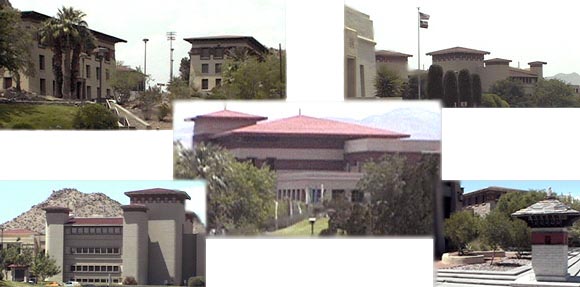

The Bhutanese architecture of The University of Texas at El Paso has been associated with the campus since its earliest days.
Photographs from an article about Bhutan, “Castles in the Air,” in the April 1914 issue of National Geographic inspired the architectural style of the campus. Kathleen Worrell, wife of the first dean of the School of Mines, convinced those involved to model the new campus buildings after dzongs–Bhutanese monasteries with massive sloping walls, high inset windows and decorated with tile mandalas, a symbol of unity and wholeness.
Henry Trost, a distinguished El Paso architect, executed the plans for the original cluster of four buildings, perched on an outcropping of andesite, a common volcanic rock.
Ninety buildings are now nestled at the base of the western Franklin Mountains. The combination of common architectural style and location at the mountainous foothills creates a unique feeling of continuity and community for all who visit.